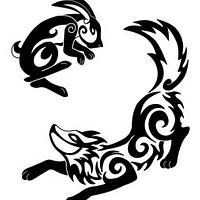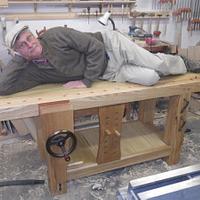
MsDebbieP
in almost 12 years
TIPS: sanding
8 Replies
Debbie,
The answer to the sanding dilemma is: finagle someone else to do it!
L/W
“Those who would give up essential Liberty, to purchase a little temporary Safety, deserve neither Liberty nor Safety.” Benjamin Franklin
The thing about sanding is you do a lot of it. Find a way to fall in love with the process because, you’ll be doing a lot of it. It takes a lot of time and you do it a lot. While you are doing it (and you’ll be doing it a lot) you can pride yourself that the job is nearly done! (hurrah!) and since you’re doing it a lot, it gives you a lot of time to congratulate yourself. I love sanding…I do….really….
-- Alec (Friends call me Wolf, no idea why)
For hard to sand areas, I use a lot of PSA sandpaper stuck onto various wooden “files” that are shaped to fit into the tight areas. PSA sandpaper folded over the end of a putty knife is a great tool for sanding inside corners.
Bondo Gaposis
Buy or build a drum sander. You will wonder how you ever got along without one!
Mike, an American living in Norway
Sanding really falls in two categories and some folks would say more categories if you include
shaping wood.
one category is construction sanding. This is sanding to create or refine a shape or even trim wood,this type of sanding usually uses more aggressive grits of sand pape(36-80grite) and equipment like,belt sanders, edge sanders, oscillating spindle sanders ,drum sanders ,disc sanders, stroke sanders ,hand held grinders and more.
The second type of sanding is finish sanding,exclusively used to get ready to apply a finish.This type of sanding can be done buy hand or buy the use of machines ,some of the machineries are the same machinery used for construction sanding like: Drum sanders and perhaps stroke sanders.still these larger machines are mostly used for the beginning of finish sanding on lower more aggressive sand paper in the 60-80 grit range. More typically small shops and hobbyist use pad sanders and Random orbital sanders to sand their projects.
I find with many of my students start with pad sanders aka as 1/4 sheet sanders . Pad sanders have square bases and mostly operate on a vibration motion . Usually after some one has used a Random orbital sander(ROS) they seldom use their pad sanders because ROS’s take so much less effort to get through the sanding process . ROS sanders come in a variety of shapes sizes and prices. These type sanders also come in air driven varieties, but they require a large compressor to supply enough volume air to run these sanders .How the sand paper is connected to ROS sander varies also ,some use PSA sandpaper or hook and loop(velcro). Hook and loop types are much easier to change grits of sand paper than PSA types In general I believe most folks are in favor of hook n loop style that use ROS"s There is one additional type of Hook and loop sand paper called Abranet that has proven to last longer than others,but also cost more,that you may consider.
Because many people try to minimize the amount of time they sand the try skipping between grits.From my experience this does not produce a good finish or speed the process up. You are much better off starting at grits as low as 60 grit and spending most of your time getting defects out with the lower grits and then working your way through the grits usually spending less time with each of the finer grits. The process starts with 60-80 then through the rest of the grits,
60,80,100,120,150,180, this is were I stop ,because sanding finer than that is not necessary and the finer the grit the more you block stains and some finishes. Some times sanding finer is a benefit,as an example end grain should be sanded to 600 or finer to help minimize the amount of penetration of finish so that your end grain does not appear darker because end grain abzorbs more finish .
There are many other specialized sanders and sanding tools to reach in confined spaces . Some of these are profile sanders, sanding sticks,sanding blocks,sanding sponges,sanding flap disc, quick changing sanding disc,sanding drums (for use in a drill or drill press),sanding cord, and shop made aids like psa sandpaper wraped around sticks or even fingernail sanding boards and much much more.
To go a step further there are techniques and tools that are used instead of sanding,as and example a well sharpened plane or card scraper can produce a ready to finish surface. These types of tools for smoothing wood has been in use in Japan for centuries .
woodworking classes, custom furniture maker
Nice post A1Jim. I think the key is that you need to scratch the wood, then scratch the scratches, then scratch the scratches’ scratches…and keep it up till it’s clean.
-- Alec (Friends call me Wolf, no idea why)
I sand before I assemble. And yes go through the grit
I start I 80.
My least enjoyable part of woodworking
Abbas, Castro Valley, CA
Sand before you assemble. Automate the sanding as much as possible eg. spindle sanders, belt sanders etc. Try and plan your work so that “construction sanding” as Jim put it, is a minimum or use hand tools for shaping, leveling.
I don’t mind finish sanding when I can use my ROS, but I hate sanding by hand, the dust gets everywhere and I end up coughing for days after.
Rob, Sault Ste. Marie, Ontario
















